Your one-stop guide to Yellowtail spiny eel maintenance in a medium-sized community aquarium. This overview includes easy identification tips and unique dimorphism features.

Yellowtail Spiny Eel: A Colorful, Compact Choice
Hobbyists consider the Yellowtail spiny eel, also known as the “barred spiny eel” or Macrognathus pancalus, the best small freshwater eel for aquariums. It earned popularity and preference due to its approachable temperament, 7” size, and vibrant yellow tail.
If this is your first Macrognathus pancalus intro, and you’re unsure how to care for it in an aquarium, you’re in the right place for maintenance tips.
In this yellowtail spiny eel overview, you’ll learn all you need to succeed in its care, including a brief background, identification tips, tank setup, diet, tank mates, healthcare, and much more.
Author’s Note: Check out our post on The 13 Freshwater Aquarium Eels That Can be Kept as Pets for even more eels!
Natural Background & Habitat

The Yellowtail eel’s natural habitat is in South Asia’s shallow and slow rivers, particularly in India. It’s environment is filled with soil substrates that support rooting plants.
So make your aquarium mimic its natural habitat for compatibility with its mud-burrowing habits. Before we get to the details of building an ideal eel aquarium environment, let’s help you identify the species and provide adequate yellowtail eel care.
Recognizing the Species
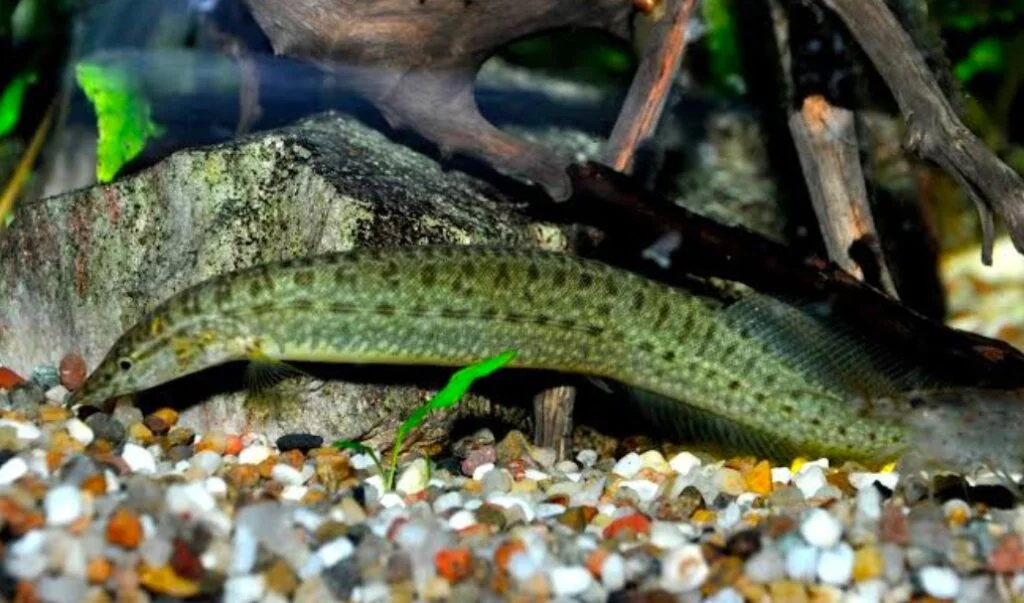
Identifying Macrognathus pancalus is easier than you think once you focus on its physical characteristics.
This species is a slender, snake-like freshwater fish that grows to a maximum length of 7”, a relatively small spiny eel size. However, it shares more physical features with other spiny eels, such as its barred yellow tail fins on a typically green or brown base body.
If you’re interesting in breeding this species, you’d appreciate the sexual dysmorphism of this species. See the table below for the differences between male and female spiny eels.
| Female Yellowtail Eel | Male Yellowtail Eel |
| Rounder body | Slender body |
| Larger | Smaller |
| Fainter Coloration | Brighter Coloration |
Next up on our yellowtail spiny eel care overview is the tank setup essentials for a comfy home aquarium for this species.
Tank Setup Essentials
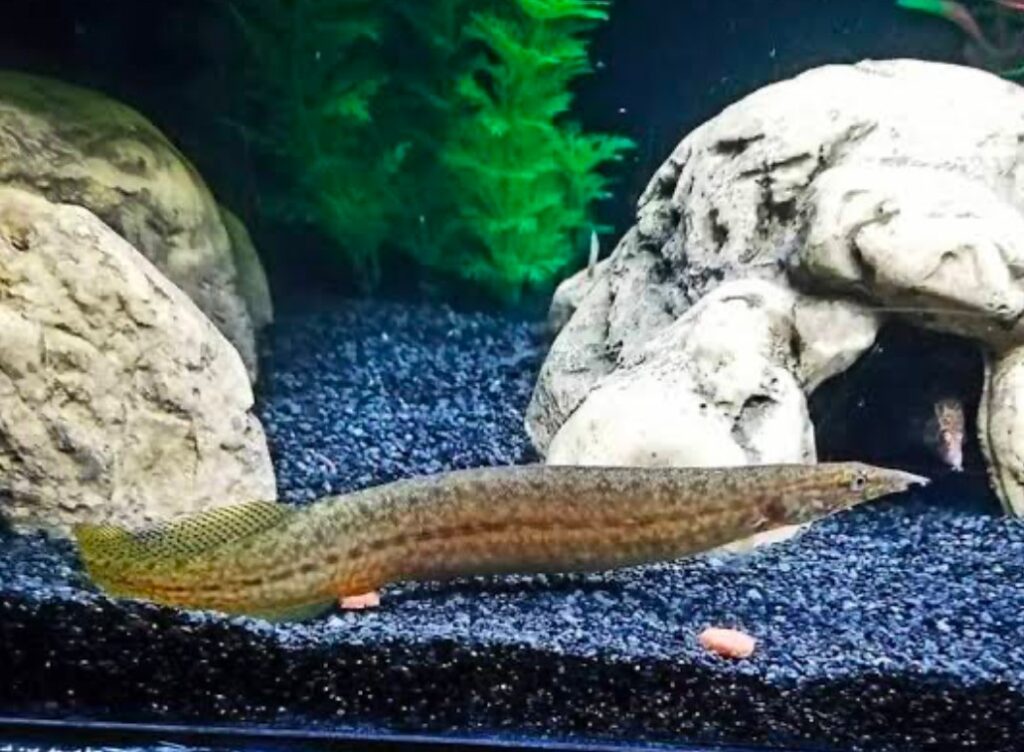
Now that you can identify the species, it’s time for your spiny eel tank setup.
Tank Size & Structure
The recommendation is to create enough space to house at least four to five Yellowtail spiny eels together as a group in a rectangular tank that holds at least 20 to 30 gallons of water.
A rectangular, long tank supports your pet’s snake-like body and substrate-burrowing behavior.
Substrate & Decor
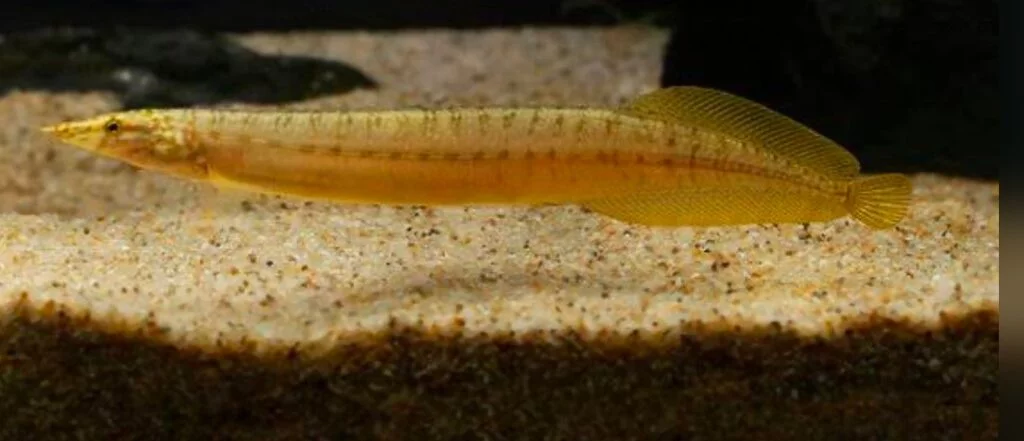
Yellowtail spiny eels are initially shy in aquariums, so they often hide in the substrate while sticking out their snouts for oxygen.
So, fine sand is the ideal substrate for spiny eels to comfort them when they burrow. Use driftwood, live plants rooted in soil, and smooth rocks to create hiding spaces and caves.
Water Flow
Use a gentle flow producing aquarium filtration system in your tank to mimic the natural, slow-moving rivers of South Asia.
Water Parameters & Maintenance
Maintaining your aquarium’s water quality weekly is important to your pet’s healthcare. Set the ideal parameters (listed below) and make routine checks to ensure you always meet all their water quality needs.
Water Parameters
Set the following Macrognathus pancalus water parameters for an ideal aquarium environment.
| Temperature | 70–80°F |
| pH | 7 – 8 |
| Hardness | 12 – 25 dGH |
Although Yellowtail spiny eels have a tolerance for brackish water, ensure a pH balance with only some salinity.
Without maintaining proper water parameters, the tank’s water quality can degrade, which can cause a wide range of issues from cloudy aquarium water to illness and mass die off.
Maintenance
Use a strong filter with a low flow to keep the water clean without stressing your Yellowtail spiny eel. This species survives on low oxygen, but that doesn’t mean you shouldn’t oxygenate their tank, especially as they primarily live at the water’s substrate.
Author’s Note: For more on filters check out our post on The 7 Best Aquarium Canister Filters for a comprehensive guide!
Another aspect of Yellowtail spiny eel care is diet and feeding, up next!
Diet & Feeding Behavior
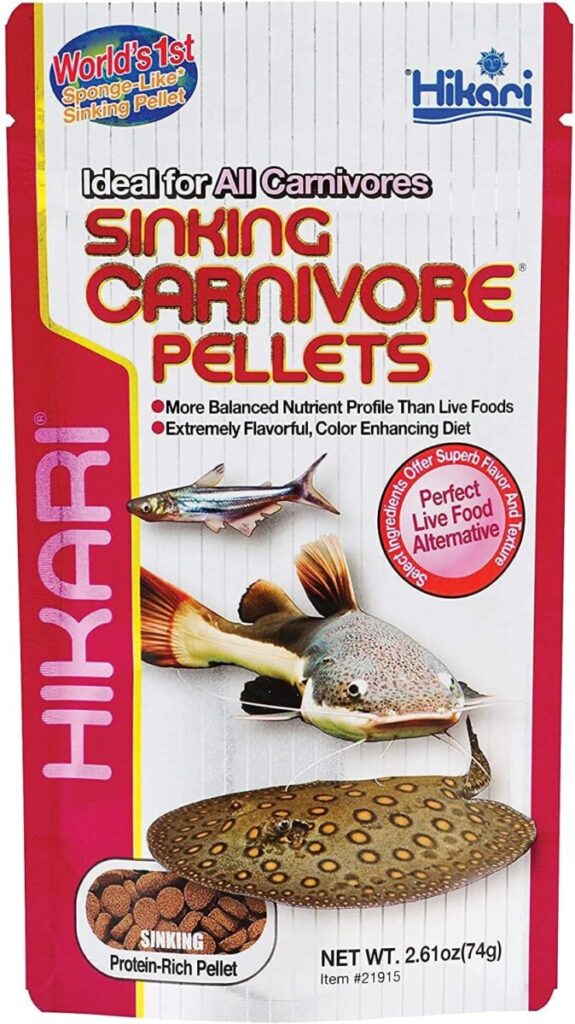
Sinking Carnivore Pellets for Pet
Found On Amazon
This species is a nocturnal bottom-feeder. It eats food found along the substrate and is primarily carnivorous. So, preparing an adequate Macrognathus pancalus feeding routine may be tricky.
Here’s a list of what to feed yellowtail spiny eel to ensure optimal health.
- Live worms: Bloodworms, tubifex, earthworms
- Insects: Larvae insects
- Crustaceans: Small Prawns or Zooplankton
- Frozen/Freeze-Dried: Any of the above foods in frozen and dried forms.
- Blanched Veggies
Serve them at night when they’re most active and clean the remnants in the morning. Note that it’s best to serve them in little portions they can finish to reduce waste.
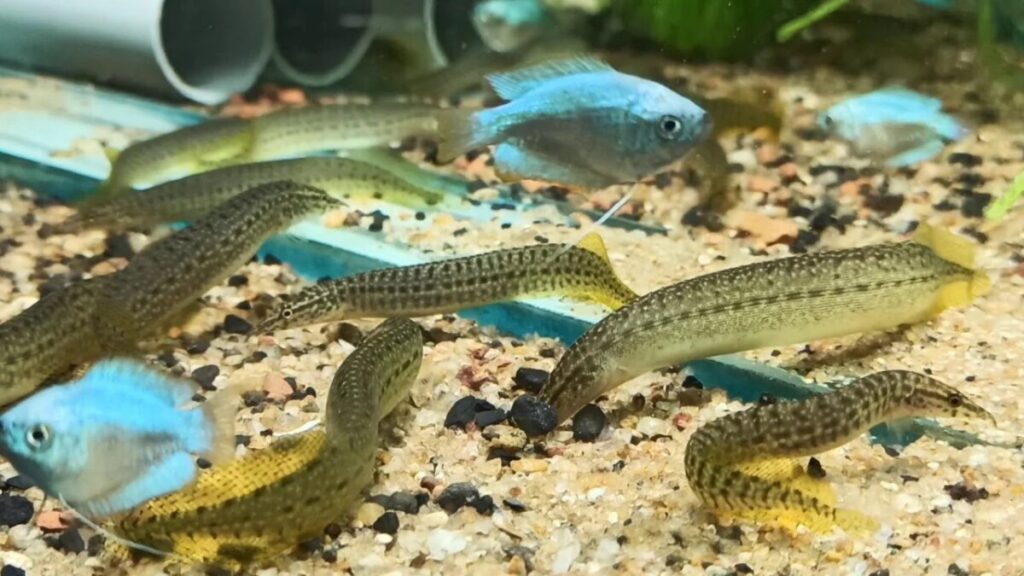
The Yellowtail species is a peaceful eel for community tanks and would thrive in small groups of similarly sized fish with non-aggressive temperaments. Rasboras and Loaches make some of the best eel tank mates as they fit those criteria.
For proper eel social care, you must observe your pet’s interactions and behaviors daily. Watch for discomfort or unusual actions and immediately respond to the situation. Because Yellowtail eels also eat small fish, avoid pairing them together.
Health Concerns & Care

Let’s discuss common health issues in spiny eels and early detection, prevention, and treatment protocols. It’s important to pay attention if you care about long-term spiny eel health.
Common Health Issues and Symptoms
- Fin Rot: Spiny eels have sensitive fins prone to damage and injury from sharp edges or misplaced decor. When left untreated, these injuries rot, causing more severe wounds on your pet’s skin.
- Discoloration: Is often a symptom of malnutrition, internal parasites, or poor water quality.
- Blindness: Yellowtail Spiny eels are sensitive to light, so use low lighting inside your tank to prevent them from going blind in bright lighting.
- Lethargy: Laziness and inactivity are often symptoms of a disease. It could be an infection or discomfort from overfeeding.
- Infections from parasites and bacteria.
- Bloating: Overfeeding your Yellowtail spiny eels leads to bloating and discomfort for your pets.
- Malnutrition: Your eels will look sickly and become lazy when they don’t get enough nutrients from food.
Disease Prevention
If you’re considering preventing injuries in yellowtail eels, the answer is to create a safe environment for them.
Avoid rough gravel substrates and use fine sand only. You can also prevent infections by maintaining pristine water quality and feeding them a balanced diet to boost their immune systems. Add marine salt to the water to maintain the pH levels.
Treatment Protocols
- Quarantine affected fish
- Change 20 – 50% of the water.
- Ensure 10 – 15 hours of filtration.
- Improve water quality using recommended parameters.
- Improve diet
- Add aquarium salt to treat skin diseases, but no copper.
- Change tank mates in case of stress.
Lifespan & Community Fit
With proper and comprehensive yellowtail spiny eel long-term care, this species will live for 5+ years. So, despite being a long-term commitment, the yellowtail eel’s lifespan isn’t as long as that of other species. This beginner eel species suits a mid-size tropical community tank filled with other compatible fish.
Conclusion: Why Choose This Eel
A compact size, peaceful nature, and lower space requirement make the Yellowtail eel the best beginner choice eel species. It’s particularly ideal for medium-sized community tanks filled with Rasboras and Loaches.
If you need more reasons to keep the yellowtail spiny eel species in your aquarium, scroll to the top of this overview and read them again! It’s an easy-maintenance fish with an average lifespan.
So, get yours today and share your experience with the community in the comment box below!



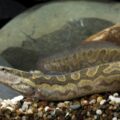

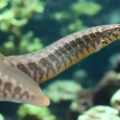
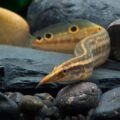
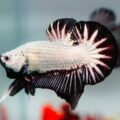
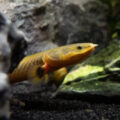


1 thought on “Yellowtail Spiny Eel (Macrognathus pancalus): A Small but Striking Beginner-Friendly Eel”